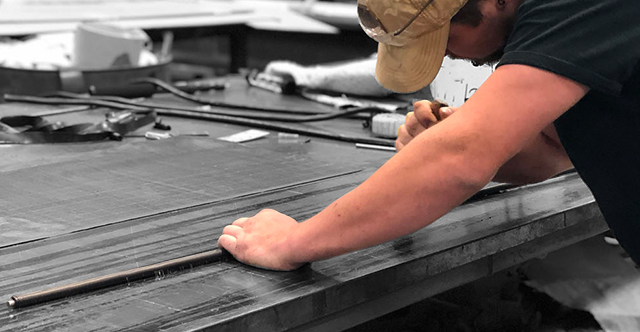
When we talk about our clamp pads and Abrasiplate products, many times we use the term vulcanize to describe how the rubber is adhered to the substrate, but what does that really mean?
The Vulcanization Process
Vulcanization is a process of treating crude or synthetic rubber chemically to give it useful properties, such as elasticity, strength and stability. When we vulcanize a piece of rubber to a substrate, like metal or wood, we know it isn’t going anywhere.
The process works by applying one to two layers of bonding primers to the substrate after it is prepared, i.e., degreased and prepped. A tack cement is generally used to adhere the raw rubber to the substrate to hold it in place during the rest of the process. The raw rubber and substrate are then placed into some type of vessel to apply heat and pressure for curing and bonding. Common vessels are autoclaves, vulcanizers, IR oven or presses equipped with heat platens. Once the piece is complete, it is trimmed of any rubber flow and shipped out.
Vulcanization vs. Glue
For a product that’s glued, the process starts the same way. The substrate is prepped, and then a cold bond glue is applied to both the substrate and the cured rubber sheet. The two materials are then adhered together and the product is complete.
For some products, a cold glue bond is all that’s required. And if the rubber needs to be replaced, the bond can be broken by using chemicals to the bond surface. But the vulcanized process literally creates an unbreakable bond between the rubber and substrate that can only be removed by cutting, grinding, chiseling or burning off the rubber.
A vulcanized bond is useful for products that will take wear and tear, like our recovered clamp pads and Abrasiplate. These products take a lot of abuse and you don’t want that rubber going anywhere. For example, clamp pads help move heavy, bulky materials. If that rubber slips, so does your product. Abrasiplate is used by companies to reduce friction and abrasion when sandblasting, grinding or chemical etching. The last thing you want to worry about is the rubber adhering to the substrate when you’re trying to complete jobs.
The Bottom Line
The strength of a vulcanized bond is always going to be stronger than a cold, glued one. It produces a higher quality product that can perform up to any given standard or expectation. But, there are times when companies only need a glued product, depending on the application. Wondering which processes will suit your company’s needs? That’s where we come in. Our team can answer any questions you have about our Endurawear Rubber products, even if you’re not sure about the solution. Contact us today and after asking a couple of questions, we’ll help you find the best products to solve your abrasion and impact issues.


